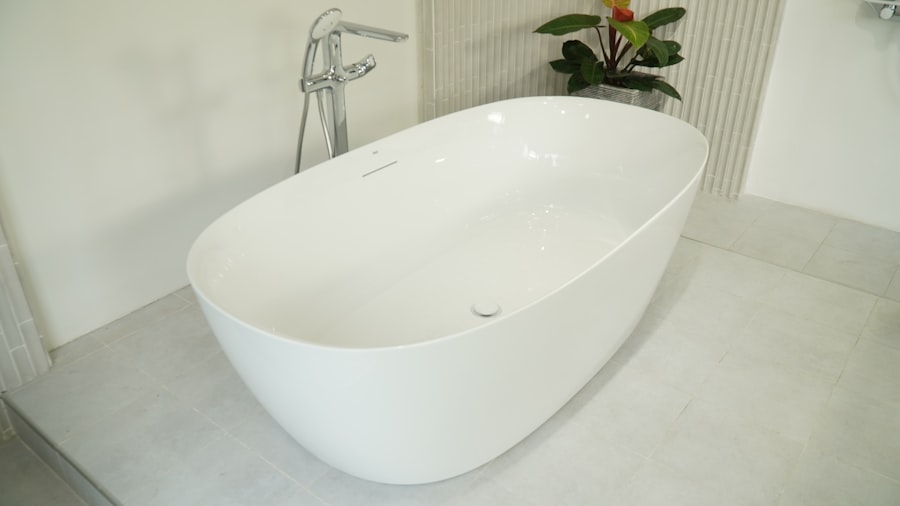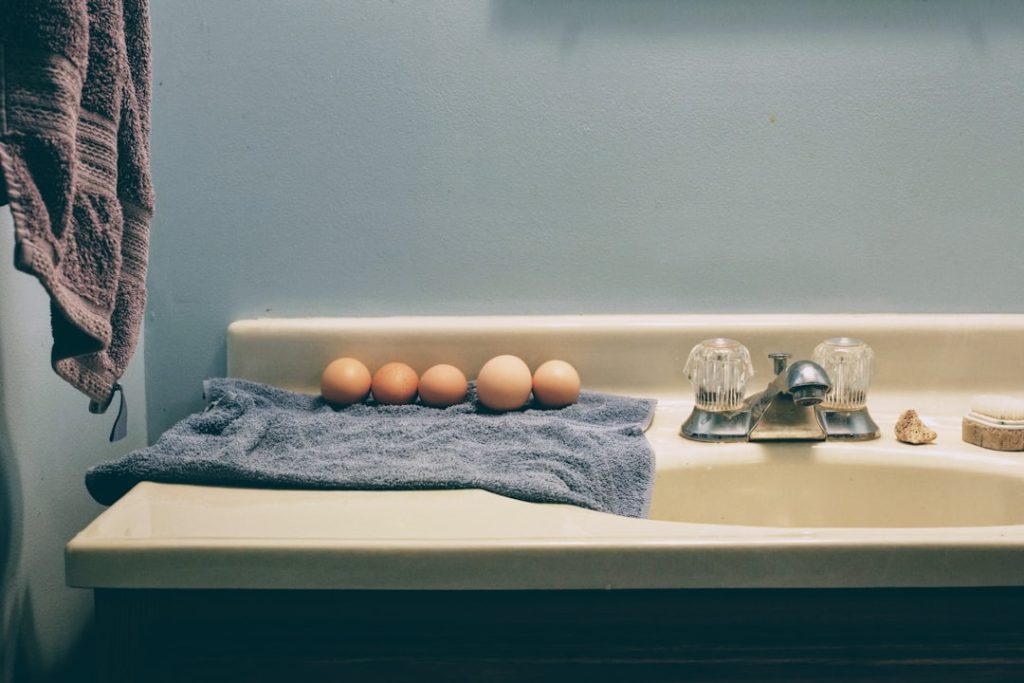A custom bath vanity serves as a focal point in any bathroom, merging functionality with aesthetic appeal. Unlike standard vanities, which may not fit the unique dimensions or style of a space, custom vanities are tailored to meet specific needs and preferences. This personalization allows homeowners to create a cohesive design that reflects their individual taste while optimizing the available space.
A well-designed custom vanity can enhance the overall ambiance of the bathroom, making it a sanctuary for relaxation and self-care. Moreover, a custom bath vanity can significantly increase the value of a home. Potential buyers often look for unique features that set a property apart from others on the market.
A thoughtfully designed vanity, crafted with quality materials and attention to detail, can be a selling point that attracts buyers. It not only showcases the homeowner’s commitment to quality but also demonstrates an understanding of modern design trends and functionality. In essence, investing in a custom bath vanity is not just about personal preference; it is also a strategic decision that can yield long-term benefits.
Key Takeaways
- Custom bath vanities enhance bathroom aesthetics and functionality tailored to your space.
- Selecting the right vanity involves considering size, style, and storage needs.
- Customization offers personalized design, improved storage, and better use of space.
- Various materials and finishes allow for durability and style matching your decor.
- Installation requires professional expertise, with costs varying based on design complexity and materials.
How to Choose the Right Custom Bath Vanity for Your Space
Selecting the right custom bath vanity begins with assessing the specific dimensions and layout of your bathroom. Measure the available space meticulously, taking into account not just the width and height but also the depth of the area where the vanity will be installed. This ensures that the vanity will fit comfortably without overwhelming the room or obstructing pathways.
Additionally, consider the plumbing and electrical fixtures already in place, as these will influence the design and placement of your new vanity. Once you have a clear understanding of your space, think about your storage needs and how you intend to use the vanity. For instance, if you require ample storage for toiletries, towels, and other essentials, opt for a design that incorporates drawers and cabinets.
On the other hand, if your bathroom is primarily used for quick routines, a minimalist approach with open shelving might suffice. Furthermore, consider the overall style of your home; whether it leans towards modern, traditional, or eclectic influences, your custom vanity should harmonize with existing decor to create a seamless look.
Benefits of Customizing Your Bath Vanity

One of the primary advantages of customizing your bath vanity is the ability to tailor it to your specific needs and preferences. This level of personalization extends beyond mere aesthetics; it encompasses functionality as well. For example, you can choose the number of drawers, their sizes, and even their internal organization to suit your storage habits.
This means no more rummaging through cluttered drawers to find that elusive bottle of lotion; everything can be organized in a way that makes sense for you. Additionally, customizing your bath vanity allows you to select materials and finishes that align with your lifestyle. If you have children or pets, you might prioritize durable surfaces that can withstand wear and tear.
Alternatively, if you are looking for a luxurious feel, you might opt for high-end materials like marble or quartz. The ability to choose not only enhances the visual appeal but also ensures that the vanity meets practical requirements, making it a worthwhile investment in both form and function.
Custom Bath Vanity Materials and Finishes
| Material | Finish Options | Durability | Maintenance | Water Resistance | Common Uses |
|---|---|---|---|---|---|
| Solid Wood (Maple, Oak, Cherry) | Stained, Painted, Natural, Lacquered | High | Moderate – requires periodic sealing or refinishing | Moderate – sensitive to prolonged moisture exposure | Traditional and custom luxury vanities |
| Medium Density Fiberboard (MDF) | Painted, Laminate, Veneer | Medium | Low – easy to clean but vulnerable to water damage if exposed | Low – can swell if water penetrates surface | Budget-friendly custom vanities with painted finishes |
| Plywood | Veneer, Painted, Laminate | High | Moderate – requires sealing to protect edges | Moderate – better than MDF but still needs protection | Mid-range custom vanities with natural wood look |
| Laminate | Glossy, Matte, Textured | Medium | Low – easy to clean, resistant to stains | High – very water resistant | Modern and budget-conscious vanities |
| Thermofoil | Glossy, Matte | Medium | Low – easy to clean but can peel if exposed to heat or moisture | Medium – water resistant but edges vulnerable | Contemporary vanities with smooth finish |
| Metal (Stainless Steel, Aluminum) | Brushed, Polished, Powder Coated | Very High | Low – easy to clean and maintain | Very High – excellent water resistance | Industrial and modern style vanities |
| Glass | Frosted, Clear, Colored | Medium | Moderate – requires regular cleaning to avoid water spots | High | Accent panels or vanity tops |
| Stone (Marble, Granite, Quartz) | Polished, Honed, Leathered | Very High | Moderate – requires sealing to prevent stains | Very High | Countertops and luxury vanity surfaces |
When it comes to materials for custom bath vanities, there is an extensive array of options available, each offering distinct advantages. Solid wood remains a popular choice due to its durability and timeless appeal. Species such as oak, maple, and cherry provide strength while allowing for various finishes that can complement any design scheme.
However, wood requires regular maintenance to prevent warping or damage from moisture exposure. For those seeking a more contemporary look, engineered materials like plywood or MDF (medium-density fiberboard) are excellent alternatives. These materials can be finished with laminate or veneer to mimic the appearance of solid wood while being more resistant to moisture and easier to maintain.
Additionally, stone surfaces such as granite or quartz are increasingly favored for countertops due to their durability and resistance to scratches and stains. The choice of material not only impacts the aesthetic but also plays a crucial role in the longevity and maintenance of the vanity.
Designing a Custom Bath Vanity to Maximize Storage and Functionality
Maximizing storage and functionality in a custom bath vanity requires thoughtful design considerations. One effective approach is to incorporate multi-functional elements such as pull-out shelves or hidden compartments that can accommodate various items without cluttering the surface. For instance, integrating a pull-out trash bin within the cabinetry can keep waste discreetly out of sight while maintaining easy access.
Another strategy is to utilize vertical space effectively by installing tall cabinets or shelving above the vanity. This not only draws the eye upward, creating an illusion of height in smaller bathrooms but also provides additional storage for items that are less frequently used. Furthermore, consider incorporating features like built-in lighting or electrical outlets within the vanity design.
These elements enhance usability by providing adequate illumination for grooming tasks while ensuring that devices can be charged conveniently without creating unsightly cord clutter.
Custom Bath Vanity Installation Process

The installation process for a custom bath vanity typically begins with careful planning and preparation. Once the design has been finalized and materials selected, it is essential to ensure that all plumbing and electrical work is up to code and ready for installation. This may involve hiring professionals to relocate plumbing fixtures or install new electrical outlets if necessary.
Once everything is in place, the actual installation can commence. This usually involves securing the vanity to the wall to ensure stability and prevent tipping. If the vanity includes a countertop, it will be installed next, often requiring precise measurements to ensure a perfect fit around sinks and other fixtures.
Finally, any finishing touches such as hardware installation or caulking around seams will be completed to ensure a polished look. Throughout this process, attention to detail is crucial; even minor misalignments can detract from the overall appearance and functionality of the vanity.
Cost Considerations for a Custom Bath Vanity
When budgeting for a custom bath vanity, several factors come into play that can influence overall costs. The choice of materials is one of the most significant determinants; high-quality woods or premium stone countertops will naturally drive up expenses compared to more economical options like laminate or MDF. Additionally, intricate designs or custom features such as built-in lighting or specialized storage solutions will add to the final price.
Labor costs also play a critical role in determining the total expenditure. Hiring skilled craftsmen for both construction and installation ensures that the vanity is built to last but may come at a premium price. It’s essential to obtain multiple quotes from contractors and compare their services before making a decision.
While it may be tempting to opt for lower-cost options, investing in quality craftsmanship often pays off in terms of durability and aesthetic appeal over time.
Trends in Custom Bath Vanity Design
The landscape of custom bath vanity design is continually evolving, influenced by changing consumer preferences and advancements in materials technology. One prominent trend is the shift towards minimalism, characterized by clean lines and uncluttered surfaces. This design philosophy emphasizes functionality while creating an airy feel in bathrooms, making it particularly appealing for smaller spaces.
Another emerging trend is the incorporation of bold colors and textures into vanity designs. While traditional white or wood finishes remain popular, many homeowners are now opting for vibrant hues or mixed materials that add personality and flair to their bathrooms. Additionally, sustainable materials are gaining traction as eco-conscious consumers seek out options that minimize environmental impact without sacrificing style or quality.
This trend reflects a broader movement towards sustainability in home design, where aesthetics and environmental responsibility go hand in hand. In conclusion, custom bath vanities represent an intersection of personal expression and practical utility within bathroom design. By understanding their importance, exploring material options, maximizing functionality through thoughtful design, navigating installation processes effectively, considering costs carefully, and staying abreast of current trends, homeowners can create spaces that are not only beautiful but also tailored to their unique lifestyles and needs.



